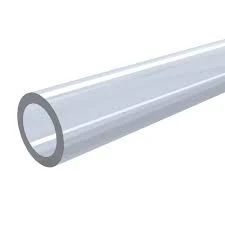Aug . 06, 2024 10:51 Back to list
Understanding the Applications and Benefits of PP Welding Rods in Various Industries
Understanding PP Welding Rods Applications, Benefits, and Uses
Polypropylene (PP) welding rods are integral components in the field of plastic fabrication and repair. Due to their versatility and exceptional properties, these rods have gained significant popularity in various industrial applications. This article explores the characteristics, benefits, and uses of PP welding rods, helping readers to understand why they are a preferred choice for many in the field of plastic engineering.
What is a PP Welding Rod?
PP welding rods are made from polypropylene, a thermoplastic polymer known for its robust and resilient nature. These rods are primarily used in plastic welding processes, which involve joining two or more thermoplastic materials through the application of heat. The welding technique typically requires a hot air tool or extrusion welding, allowing the rods to melt and fuse with the base materials, creating a strong, durable bond.
Characteristics of PP Welding Rods
One of the standout features of polypropylene is its low density and high strength-to-weight ratio. This makes PP welding rods lightweight yet strong enough to withstand various stresses. In addition, polypropylene possesses excellent chemical resistance, enabling it to resist degradation from solvents and acids that might compromise other materials. Furthermore, they exhibit good fatigue resistance and impact strength, making them ideal for applications where flexibility and durability are required.
Another important characteristic is the high melting point of PP, generally around 160-170°C (320-338°F). This high thermal resistance allows PP welding rods to be used in higher temperature applications without losing structural integrity. Additionally, polypropylene is recyclable and environmentally friendly, aligning with modern sustainability practices.
Benefits of Using PP Welding Rods
pp welding rod

The use of PP welding rods offers several benefits. Firstly, they provide strong adhesion to polyethylene, making them ideal for repairing and fabricating items made from this common thermoplastic. This compatibility also extends to other materials used in conjunction with polypropylene, allowing for versatile applications.
Secondly, PP welding rods are cost-effective. They are relatively affordable compared to other thermoplastic welding options, making them a viable choice for many projects, whether large-scale industrial applications or small DIY repairs.
Moreover, the ease of handling and application is a significant advantage. PP welding rods can be easily melted and molded, allowing fabricators to modify and create various shapes and structures with minimal equipment. This user-friendly nature makes them suitable for both seasoned professionals and novice welders.
Applications of PP Welding Rods
PP welding rods are widely used across various industries. In the manufacturing sector, they are essential for creating and repairing plastic tanks, pipes, and containers that require high strength and resistance to chemical exposure. In the automotive industry, these rods can be used for repairing bumpers, dashboards, and other plastic components.
Moreover, in the agricultural sector, PP welding rods find use in creating sturdy, weather-resistant structures, such as greenhouse installations and irrigation systems. They are also applicable in the construction industry for waterproofing applications and as a bonding solution for different plastic materials.
In conclusion, PP welding rods are a significant asset in the realm of plastic welding and repair. Their durable characteristics, coupled with their cost-effectiveness and versatility, make them an outstanding choice for various applications. As industries continue to innovate and adapt to new challenges, the role of PP welding rods is likely to expand, paving the way for even more creative uses in the future. Whether for industrial manufacturing or DIY projects, understanding and utilizing PP welding rods can enhance the quality and longevity of plastic components significantly.
-
Durable PP Rigid Sheet: Lightweight, Chemical Resistant Solutions
NewsAug.21,2025
-
PVC Grey Sheet for Extraction: Chemical Resistant & Durable
NewsAug.19,2025
-
Durable PVC Pipe Fittings for Plumbing & Irrigation Needs
NewsAug.18,2025
-
HDPE Steel Belt Reinforced Spiral Corrugated Pipe | High Strength
NewsAug.17,2025
-
HDPE Pipe Fittings: Durable, Leak-Proof Solutions
NewsAug.16,2025
-
Premium CPVC Sheet: High-Temp & Chemical Resistant Solutions
NewsAug.15,2025

